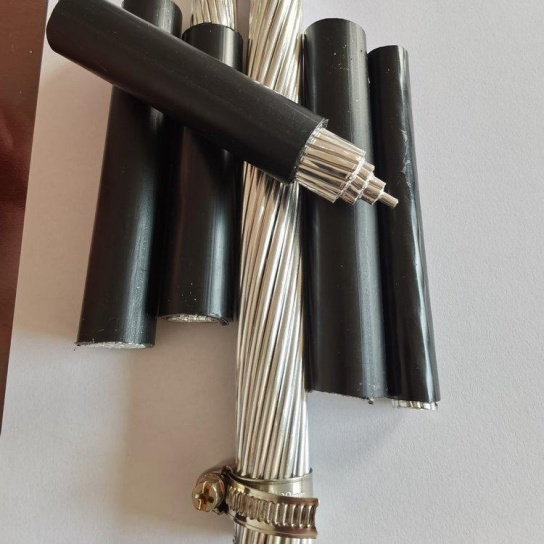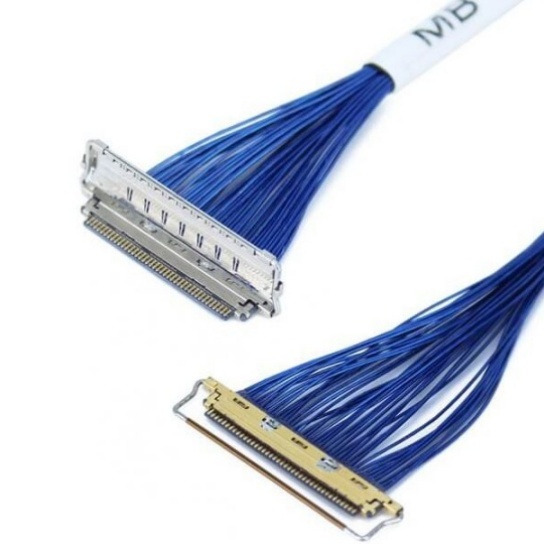How Temperature Affects Aviation Cable Performance: A Critical Guide
For aircraft to operate safely in diverse environments – from scorching desert runways to icy high-altitude cruising – every component must withstand extreme thermal stresses. Aviation cables, the vital conduits of power and data throughout the aircraft, are no exception. Temperature fluctuations dramatically impact their performance and longevity. Understanding these effects is critical for aircraft designers, maintenance engineers, and operators committed to safety and reliability. This guide delves into the intricate relationship between temperature and aviation cable health.
Key Temperature-Related Impacts on Aviation Cable Performance:
- Conductor Resistance & Voltage Drop:
- Effect: Electrical resistance in conductors (like copper) increases with rising temperature. This fundamental property (
α, the temperature coefficient of resistance) means a cable carrying current heats up, further increasing its resistance in a feedback loop.
- Consequence: Higher resistance causes increased voltage drop (
V_drop = I * R), especially problematic over long cable runs. This can lead to:
- Reduced power delivery to critical systems (avionics, motors).
- Diminished signal strength.
- Potential overheating at the load point as it tries to draw more current to compensate.
- Mitigation: Careful cable sizing calculations must account for the maximum expected operating temperature. Using conductors with slightly lower
α (like some copper alloys) can help marginally. Strict adherence to derating curves provided in standards like MIL-W-22759 or AS/NZS 3191 is paramount.
- Insulation & Jacket Material Properties:
- Effect: Aviation cables primarily use polymer insulation/jacketing (e.g., PTFE, ETFE, XL-ETFE, Cross-Linked Polyolefin).
- High Temperatures:
- Softening/Oxidation: Exceeding the material’s temperature rating causes softening, loss of mechanical strength (tear/tensile), increased flexibility (potentially leading to chafing), and embrittlement over time due to oxidation.
- Thermal Expansion: Polymers expand significantly more than metals. This can cause gaps at connectors or stress points if not designed for the thermal cycle.
- Dielectric Loss/Strength: Extreme heat can increase dielectric losses (converting electrical energy to heat within the insulation) and potentially degrade dielectric strength if the material breaks down.
- Low Temperatures:
- Embrittlement: Most polymers become stiffer and more brittle at very low temperatures. This drastically reduces impact resistance and flex life.
- Cracking: Sudden impacts, bending, or vibration can cause brittle insulation/jacketing to crack or shatter, exposing conductors and creating serious failure points. PTFE is particularly prone to cold-flow and stress cracking.
- Shrinkage: Polymer shrinkage at low temperatures can stress termination points or connectors.
- Mitigation: Selecting insulation/jacketing with wide operating temperature ranges suitable for the specific aircraft environment is non-negotiable. Materials like XL-ETFE offer excellent high- and low-temperature performance. Careful cable routing, use of protective sleeving (e.g., Fiberfrax, Silicone), and strain relief at termination points are crucial.
- Thermal Expansion/Contraction Differential:
- Effect: The metal conductor and the polymer insulation/jacket expand and contract at significantly different rates when temperature changes. Copper expands about 17 ppm/°C, while many polymers expand around 100-200 ppm/°C.
- Consequence: Repeated thermal cycling creates significant mechanical stress within the cable structure. This can lead to:
- **”Pistoning”:** Movement of the conductor relative to the insulation at termination points, potentially leading to looseness, increased contact resistance, arcing, or even conductor pull-out.
- Micro-cracking: Cyclical stress within the insulation bulk can initiate tiny cracks.
- Mitigation: Proper connector termination techniques (e.g., crimping, soldering following specific procedures like SAE AS7928), use of strain reliefs, and designing cable bundles with slack for thermal movement are essential.
- Moisture Ingression (Accelerated by Temperature Cycling):
- Effect: Thermal expansion and contraction can “pump” moisture into small gaps that develop within connectors or microscopic insulation defects during cold cycles. When warmed, the moisture doesn’t fully escape.
- Consequence: Trapped moisture drastically reduces insulation resistance, promotes corrosion on conductors and contacts, and in freezing conditions, causes ice formation leading to internal stress and potential cracking.
- Mitigation: Sealed connectors (per MIL-DTL-38999 standards), moisture-resistant insulation materials, and conformal coatings provide vital protection. Ensuring harnesses are properly sealed and utilizing desiccant breathers in protected areas are best practices.
Consequences of Ignoring Temperature Effects:
Failure to account for these thermal impacts can lead directly to catastrophic aircraft events:
- In-flight Electrical Failures: Fires, system malfunctions, loss of vital systems (avionics, flight controls).
- Short Circuits: Due to degraded or cracked insulation.
- Open Circuits: Broken conductors (fatigue, brittle fracture) or loose terminations.
- Signal Degradation/Noise: Affecting critical communication and sensor systems.
- Increased Maintenance Costs: Unscheduled repairs, lengthy troubleshooting, aircraft downtime (AOG).
- Reduced Service Life: Premature cable harness replacement.
Best Practices for Managing Temperature Impacts:
- Material Selection is Key: Choose cables certified to stringent aerospace standards (MIL-W-22759, AS/NZS 3191, SAE AS22759) with insulation/jacketing rated for the full expected operating temperature range, including extremes encountered during ground operations (APU running, hot tarmac) and high-altitude flight.
- Follow Derating Curves: Use manufacturer derating charts religiously to size conductors correctly based on ambient temperature and bundling conditions (higher ambient temp = lower allowed current). AS50881 is a key standard for wiring installation.
- Smart Routing & Bundling: Avoid heat sources (engines, APU exhaust, hydraulic lines). Use thermal protection (sleeving, blankets, Fiberfrax). Allow space for airflow and thermal expansion within bundles. Follow routing guidelines in SAE ARP 4761 for safety.
- Robust Terminations: Employ qualified personnel and strictly follow termination procedures for crimps, solder sleeves, and connectors (SAE AS7928, MIL-STD-2042). Use appropriate strain relief. Inspect connectors regularly for signs of thermal stress or moisture ingress.
- Environmental Protection: Utilize seals, boots, and conformal coatings where necessary to protect against moisture. Ensure drain holes are clear in areas where condensation can collect.
- Predictive Maintenance: Include thermal imaging inspections during heavy checks (especially near known hot zones) to identify overheating cables early. Perform periodic insulation resistance testing (megger testing).
- Maintain Documentation: Keep accurate wire run lists and installation records as per FAA AC 43.13-1B or EASA Part 21G guidelines, noting cable types and temperature ratings.
Conclusion: Temperature – An Inescapable Design & Operational Factor
Temperature is not a mere environmental footnote; it fundamentally dictates the electrical and mechanical integrity of aviation cables from the desert heat to the stratospheric cold. By thoroughly understanding these effects – increased resistance, insulation degradation, thermal stress, and moisture risks – and proactively implementing rigorous material selection, precise installation practices, and vigilant maintenance grounded in standards like MIL-W-22759 and AS50881, the aviation industry can ensure cable harnesses perform reliably throughout their intended service life. Prioritizing temperature management isn’t just good engineering; it’s an indispensable pillar of aircraft safety, operational reliability, and minimizing costly downtime. For the toughest environments demanding peak performance, partnering with experts in temperature-rated aviation cabling is a critical investment in airworthiness.
Optimize your fleet’s electrical reliability. Discover our range of high-performance aviation cables engineered to excel under extreme thermal conditions. [Link to Product Category]
Need help selecting the right cable for your specific temperature profile? Contact our engineering team today for a consultation. [Link to Contact Page]






